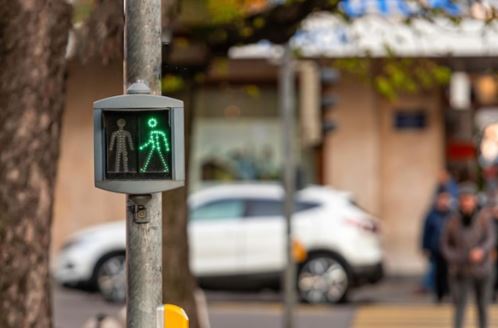How to Improve Facility Security with Access Control Systems
Facility security is a top priority for organisations across industries, from construction sites to warehouses and commercial properties. One of the most effective ways to safeguard assets and ensure smooth operations is through the use of access control systems. These systems regulate the movement of vehicles and pedestrians, offering enhanced security, efficiency, and peace of mind.
The Role of Access Control in Modern Security
Access control systems provide a structured way to manage who can enter and exit specific areas of a facility. By using technologies such as barriers, gates, and turnstiles, these systems minimise unauthorised access while ensuring seamless movement for authorised personnel.
Advanced access control solutions also integrate with surveillance and monitoring systems, offering real-time tracking and comprehensive oversight. This synergy allows businesses to address potential security breaches proactively, improving overall site safety.
Key Benefits of Access Control Systems
Enhanced Security
Access control systems prevent unauthorised entry, reducing the risk of theft, vandalism, or unauthorised use of equipment. With features like biometric recognition, RFID cards, and licence plate recognition, these systems ensure that only authorised individuals or vehicles can gain access to sensitive areas.
Operational Efficiency
In facilities like warehouses or mining sites, smooth and secure access is essential to maintain productivity. Automated gates and turnstiles speed up entry and exit, reducing delays and eliminating the need for manual checks. Turnstiles, widely used in settings such as stadiums, amusement parks, office lobbies, and airports, not only provide businesses with precise, verifiable attendance counts, enhancing revenue tracking but also improve security by guiding individuals to enter single-file. This allows personnel to monitor each entrant closely, ensuring a higher level of safety and control. This efficiency benefits both staff and visitors, creating a seamless experience.
Customisation for Diverse Needs
Access control systems can be tailored to meet the specific requirements of different industries. For example:
- Construction sites: Use boom gates and pedestrian turnstiles to control site access for workers and deliveries.
- Warehouses: Implement RFID systems for vehicle tracking and inventory protection.
- Commercial properties: Install sliding gates or bollards to secure parking areas and entrances.
Such versatility ensures that access control solutions align perfectly with the unique needs of each facility.
Choosing the Right Access Control System
Selecting the right access control system involves assessing the facility’s specific needs, risks, and operational requirements. Factors to consider include:
- Volume of traffic: High-traffic facilities may require fast-operating barriers and wide gates.
- Level of security: Sites with sensitive information or valuable assets might benefit from biometric authentication.
- Integration capabilities: Ensure the system integrates with existing surveillance or monitoring systems for enhanced security.
For businesses looking to implement comprehensive solutions, trusted providers like Rotech offer a wide range of access control products to meet diverse needs.
Advances in Access Control Technology
Modern access control systems incorporate cutting-edge features to maximise efficiency and security, ensuring comprehensive protection and streamlined operations for facilities:
- ANPR (Automatic Number Plate Recognition): This advanced technology automatically reads and records vehicle licence plates as they approach entry points. By comparing these plates against a database of pre-registered vehicles, ANPR allows seamless and swift entry for authorised vehicles while maintaining a high level of security for the premises.
- Smart Turnstiles: These are not your average turnstiles. Equipped with state-of-the-art facial recognition technology or QR code scanning capabilities, smart turnstiles offer enhanced pedestrian security. They can quickly verify identities, granting access only to those with proper authorisation and thus preventing unauthorised entry and potential security breaches.
- IoT Integration: By incorporating the Internet of Things (IoT), access control systems allow for remote monitoring and control of access points via connected devices. This integration facilitates real-time data collection and analysis, enabling security personnel to respond promptly to any anomalies or security threats, thereby greatly enhancing the overall security infrastructure.
These technological advancements ensure that access control systems remain at the forefront of facility security innovations, providing robust solutions that accommodate the ever-evolving landscape of security threats while promoting operational efficiency.
Final Thoughts
Access control systems are essential for improving security and operational efficiency in facilities across industries. Whether it’s securing a construction site, managing traffic in a warehouse, or protecting commercial properties, these systems provide robust solutions tailored to specific needs. By partnering with experts, businesses can implement access control systems that deliver lasting benefits, safeguarding both assets and personnel.



